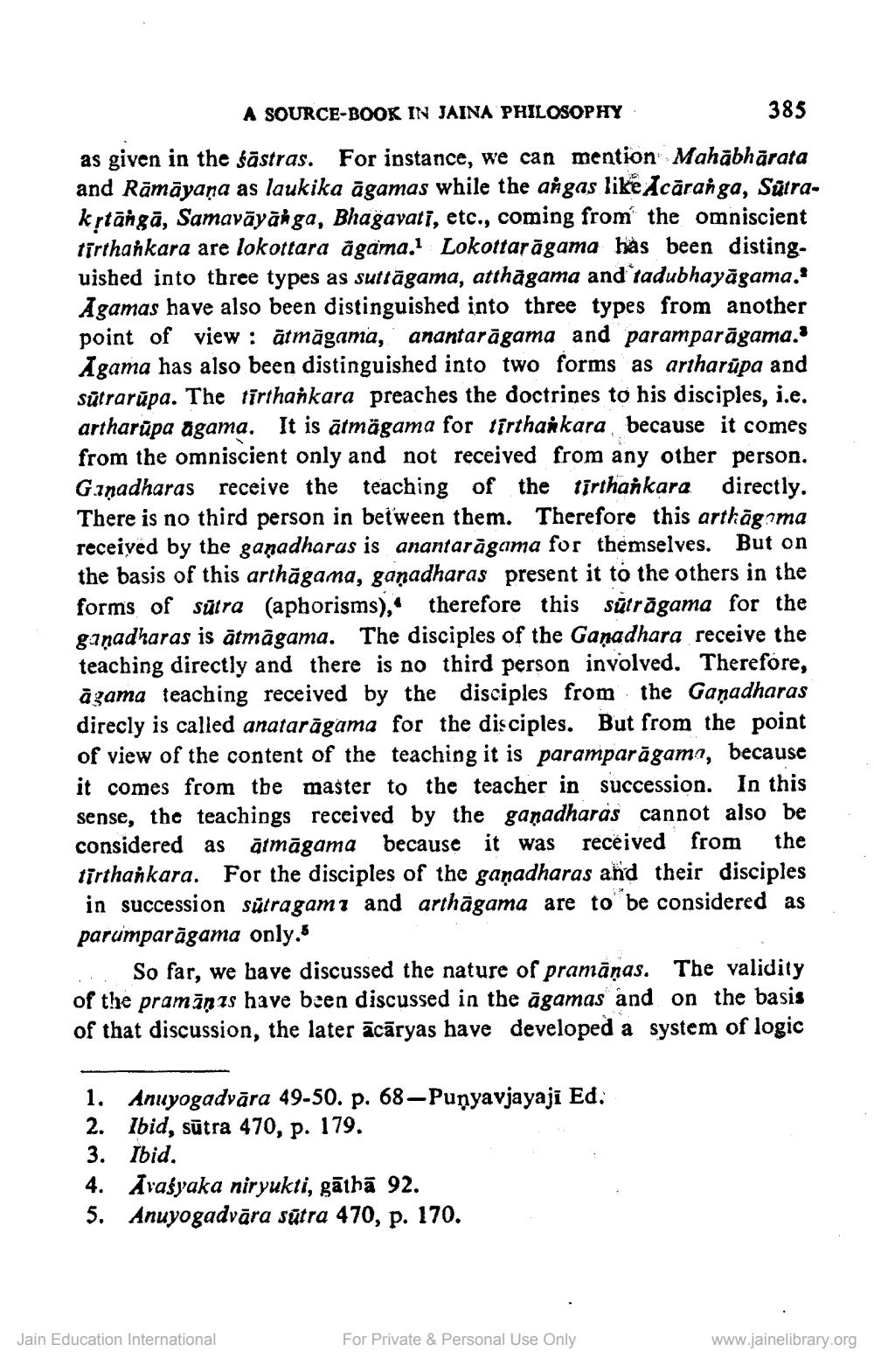________________
A SOURCE-BOOK IN JAINA PHILOSOPHY
385 as given in the fästras. For instance, we can mention Mahābhārata and Rāmāyaṇa as laukika āgamas while the ai gas like Acāranga, Sülrakrtāngā, Samavāyānga, Bhagavati, etc., coming from the omniscient tirthankara are lokottara agama. Lokottarāgama has been distinguished into three types as sutrāgama, atthāgama and tadubhayāgama.' Agamas have also been distinguished into three types from another point of view : ātmāgama, anantarāgama and paramparāgama.. Agama has also been distinguished into two forms as artharüpa and sütrarūpa. The tirthankara preaches the doctrines to his disciples, i.e. artharüpa agama. It is ātmägama for tirthaikara because it comes from the omniscient only and not received from any other person. Ginadharas receive the teaching of the tirthankara directly. There is no third person in between them. Therefore this arthāgama received by the ganadharas is anantarāgama for themselves. But on the basis of this arthāgama, ganadharas present it to the others in the forms of Sūtra (aphorisms), therefore this sūtrāgama for the ganadharas is ātmāgama. The disciples of the Ganadhara receive the teaching directly and there is no third person involved. Therefore, agama teaching received by the disciples from the Ganadharas direcly is called anatarāgama for the disciples. But from the point of view of the content of the teaching it is paramparāgama, because it comes from the master to the teacher in succession. In this sense, the teachings received by the ganadharas cannot also be considered as ātmāgama because it was received from the tirtharkara. For the disciples of the ganadharas and their disciples in succession sutragami and arthāgama are to be considered as parumparāgama only.
:. So far, we have discussed the nature of pramānas. The validity of the pramāņıs have been discussed in the āgamas and on the basis of that discussion, the later ācāryas have developed a system of logic
1. Anuyogadvāra 49-50. p. 68-Punyavjayaji Ed. 2. Ibid, sūtra 470, p. 179. 3. Ibid. 4. Avašyaka niryukti, gāthā 92. 5. Anuyogadvāra sūtra 470, p. 170.
Jain Education International
For Private & Personal Use Only
www.jainelibrary.org




